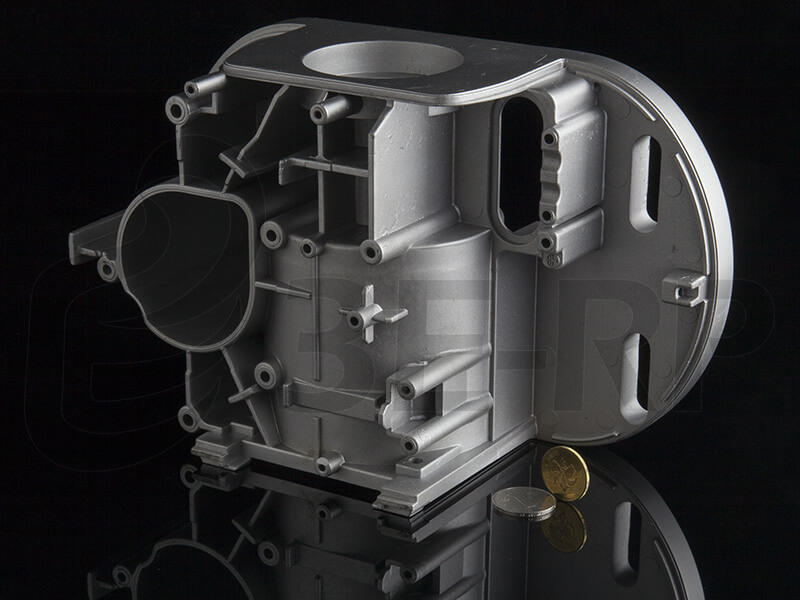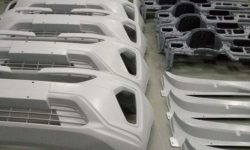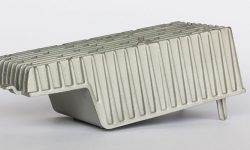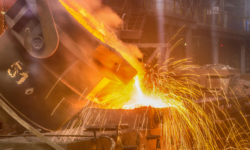Die casting is a highly accurate and efficient metal manufacturing process for industrial, commercial, and consumer goods. With tooling that lasts a very long time, die casting is suitable for the manufacturing of complex metal parts, offering great value when it comes to mass production.
Several metals can make suitable die casting materials. These are mostly non-ferrous metals (metals that do not contain a significant amount of iron) although occasionally ferrous metals can be used too. The main die casting materials are aluminum, magnesium, and zinc alloys, all of which have particular advantages and suitable applications.
This article looks at the best die casting materials, listing their respective benefits and common applications in the manufacturing world.
What is die casting?
Die casting is a form of metal casting, a family of processes in which molten metal is poured or forced into a mold cavity. There are many forms of metal casting, including sand casting (low cost), investment casting (low volume), and die casting (high volume). Casting processes differ in terms of their pattern types, mold types, compatible materials, and material delivery methods (e.g. gravity pouring vs high-pressure injection).
Within the metal casting family, die casting is particularly suited to high-volume production of complex parts. This is because it uses a permanent mold in the form of two tool steel dies. These dies are expensive to make — usually via machining — but last a very long time and provide value in the long run.
Die casting is employed across many industries in the production of industrial, commercial, and consumer products. Compared to other metal casting techniques, it is better suited to small or medium-size parts that require a good surface finish.
The die casting process
Die casting has a few variants (discussed in the following section) but the process generally follows a set routine.
Before die casting begins, a manufacturer must obtain two metal dies: the cover die half and the ejector die half. Together, these two dies form the tooling for die casting, and the gap in between the two die halves functions as the mold cavity. Dies are typically machined from hardened tool steel, which is highly durable.
The first proper stage of the die casting process involves preparing the dies for casting. This entails applying lubricant (usually water-based) to the cavity walls, ensuring that the castings will not stick to the inside of the dies. Lubricant also helps with temperature control.
The next stage is material delivery. In most die casting setups, the die casting machine injects molten metal into the mold cavity under high pressure — though the exact degree of pressure depends on the type of material and whether it is a hot-chamber or cold-chamber die casting machine. Pressure ensures that the material is forced into even the smallest crevices, and this pressure is maintained as the molten metal cools and solidifies to mitigate shrinkage.
After the metal has cooled and solidified within the mold cavity, the casting is ejected by opening up the dies and gently pushing the castings out of the dies with ejector pins. Another shot can be prepared immediately after the ejection, enabling rapid mass manufacture of identical parts.
The final stage of the die casting process is the shakeout stage, which involves cutting (manually or via special machinery) the excess bits of metal attached to the casting, including flash from the parting line and any gates, runners, and sprues (parts of the die design that allow molten metal to enter the mold cavity).
Die casting produces an excellent surface finish that does not require the same level of post-processing as, for example, machined or 3D printed parts.
Hot-chamber die casting vs cold-chamber die casting
Die casting falls into two main subtypes: hot-chamber die casting and cold-chamber die casting. These subtypes differ in terms of where the metal is melted and how it is injected. Crucially, only certain materials are suitable for hot-chamber die casting. (Note that cold-chamber die casting still requires fully molten metal; it does not process metal in its solid form.)
The main feature of a hot-chamber die casting is an ability to heat up metal within the die casting machine. Sometimes called gooseneck machines, these systems contain an internal combustion area and a pot for the molten metal. A piston (hydraulic or pneumatic) forces molten metal from the chamber into the die, whereupon the chamber can be immediately re-filled in preparation for the next shot.
Cold-chamber die casting requires the external heating of die casting materials, and the molten metal must then be transferred to the die casting machine with a transfer tube or ladle. A ram forces the molten metal from the chamber into the die (at a higher pressure than is used for hot-chamber die casting). This process is slower, since the metal needs to be transferred from the external source for each shot.
Although hot-chamber die casting is faster, it is more limited in its material compatibility. It typically only works for metals with a low melting point such as zinc, magnesium, and lead alloys. It cannot process aluminum alloys, since these can pick up iron from the chamber.
Die casting material considerations
Manufacturers must consider certain factors and variables when choosing die casting materials. These include:
- Whether the material is suitable for hot-chamber die casting
- Material costs
- Indirect materials costs (e.g. any extra post-processing required)
- Material structural properties
- Strength
- Weight
- Surface finish
- Machinability
All of these factors should be considered when choosing a die casting material for parts or prototypes.
Aluminum die casting alloys
Aluminum is one of the main die casting metals, and aluminum alloys are used in cold-chamber die casting. These alloys typically contain silicon, copper, and magnesium.
Aluminum die casting alloys are lightweight and offer good dimensional stability, which makes them a good choice for complex, fine-featured parts. Other advantages include good corrosion resistance, temperature resistance, and thermal and electrical conductivity.
Common die casting aluminum alloys include:
- 380: A general-purpose aluminum alloy which balances castability with good mechanical properties. It is used in a very wide variety of products, including engine brackets, furniture, electronics enclosures, frames, handles, gearbox cases, and power tools.
- 390: An alloy with excellent wear resistance and vibration resistance. It was developed specifically for the die casting of automotive engine blocks and is also suitable for valve bodies, impellers, and pump housings.
- 413: An aluminum alloy with excellent casting properties. It has good pressure tightness and is therefore used for products like hydraulic cylinders, as well as architectural parts and food and dairy industry equipment.
- 443: The most ductile of die casting aluminum alloys, this alloy is suitable for consumer goods, especially those that require plastic deformation after casting.
- 518: A ductile aluminum alloy with good corrosion resistance. It is used in a variety of products, including aircraft hardware fittings, ornamental hardware, and escalator components.
Magnesium die casting alloys
Magnesium is another very popular die casting material. It is even lighter than aluminum, with the added advantage of being highly machinable — making it suitable for cast parts that require additional machined details or machined surface finishing.
A major advantage of magnesium die casting alloys is their suitability for hot-chamber die casting, making them easier to use than die casting metals like aluminum. Other elements in magnesium alloys include aluminum, zinc, manganese, and silicon.
Common magnesium die casting alloys include:
- AZ91D: A general-purpose alloy with good castability, corrosion resistance, and strength-to-weight ratio. Applications include mechanical and power-train components.
- AM60: An alloy with good castability, strength, vibration dampening, and ductility. It is used in automotive components such as seat frames and panels.
- Rare earth alloys AS41B and AE42: Alloys with superior temperature resistance, as well as good creep resistance, corrosion resistance, and ductility. Both alloys are found in engine parts.
Zinc die casting alloys
Another major category of die casting metals is zinc alloys. Castable in a hot-chamber die casting machine, zinc is the most manufacturer-friendly of die casting materials and offers other benefits like impact strength, ductility, and suitability for plating. Due to its castability, it also results in minimal die wear.
Zinc is heavier than aluminum and magnesium and is usually alloyed with aluminum, copper, and magnesium.
Common zinc die casting alloys include:
- Zamak 3: A general-purpose zinc alloy that is easy to cast and offers excellent dimensional stability. In North America, more than two thirds of zinc die castings use Zamak 3. Example uses include ceiling fans and plumbing components.
- Zamak 2: A slightly stronger and more expensive alloy with added copper content. It is often used to produce tooling for plastic injection molding.
- Zamak 5: A zinc alloy close in composition to Zamak 3 but with greater tensile strength and lower ductility. Popular for products like automotive parts and wheel balancing weights.
Other die casting alloys
Other die casting materials include copper, silicon tombac, lead, and tin alloys, in addition to zinc-aluminum alloys.
Copper alloys exhibit high strength, hardness, and corrosion resistance, in addition to excellent dimensional stability. Meanwhile lead and tin alloys are very dense and can be resistant to corrosion. Zinc-aluminum alloys are recognizable by the ZA prefix; those with a lower aluminum content can be hot-chamber die cast, but those with 11% or more typically cannot.
3ERP is a prototyping and low-volume manufacturing specialist offering excellent rates on high-pressure die casting and investment casting.








